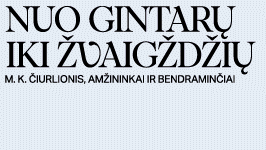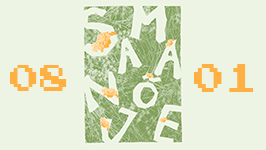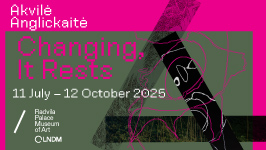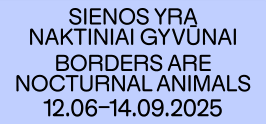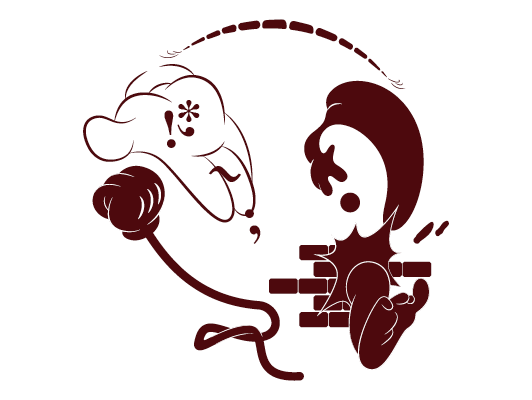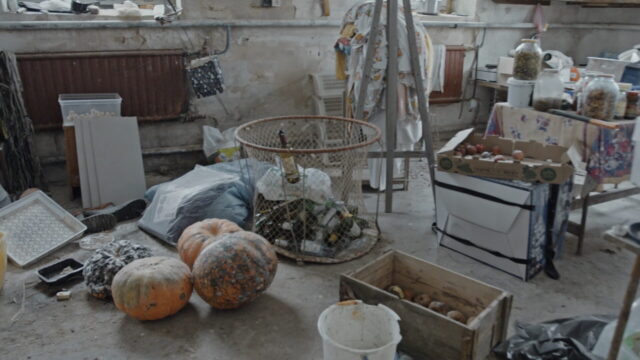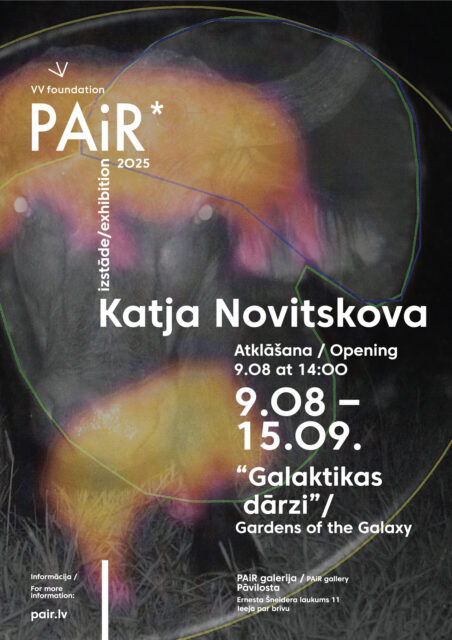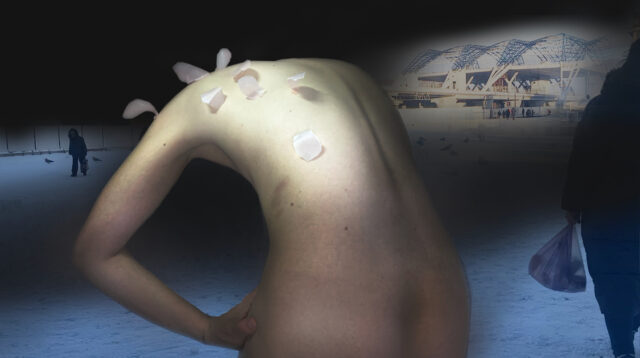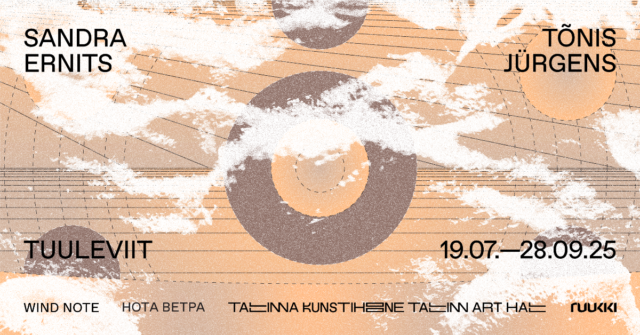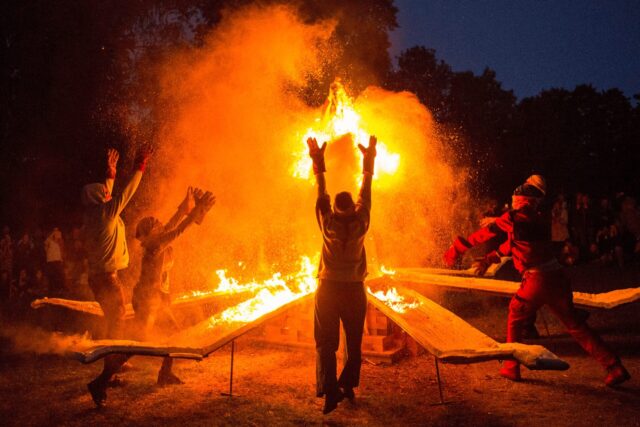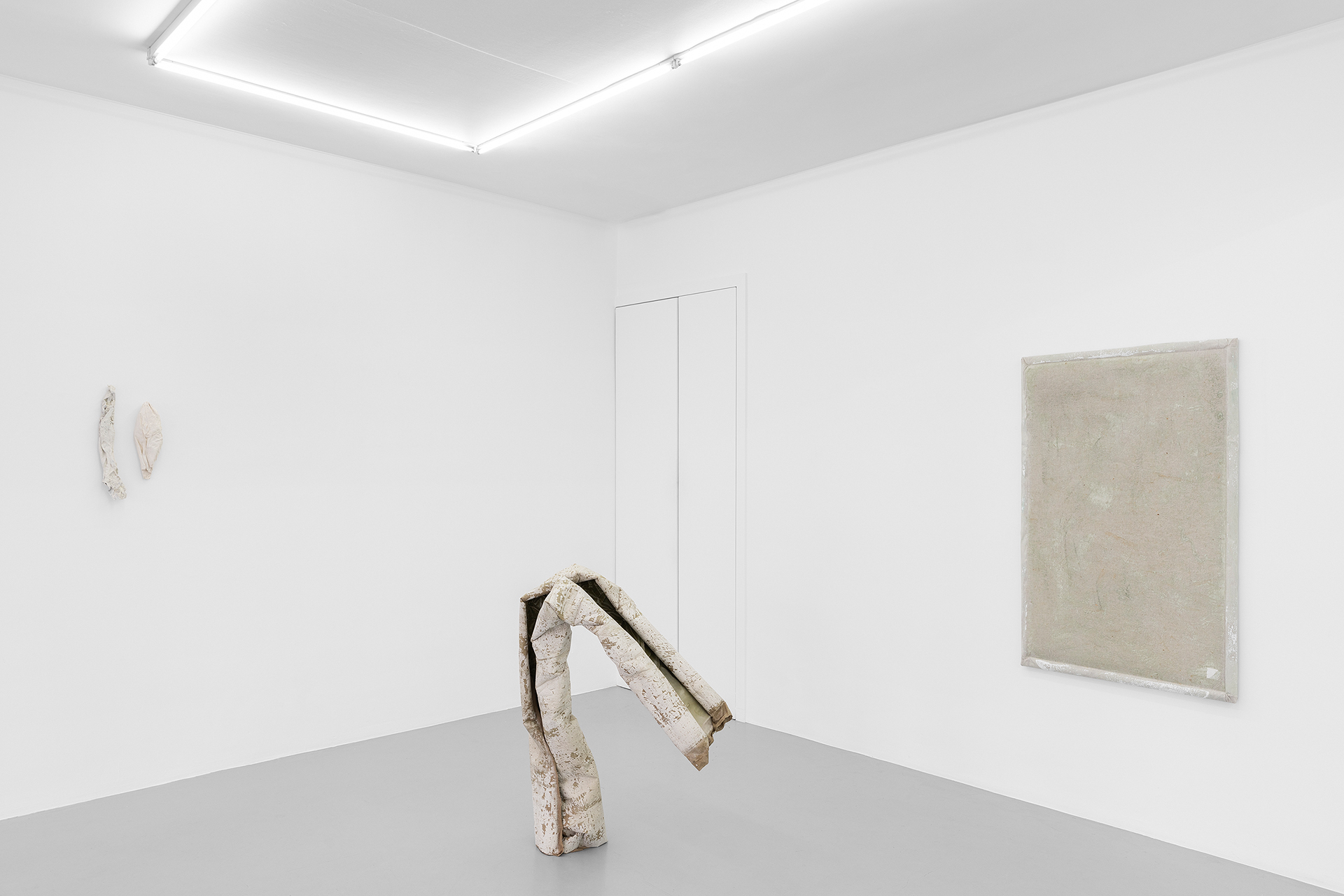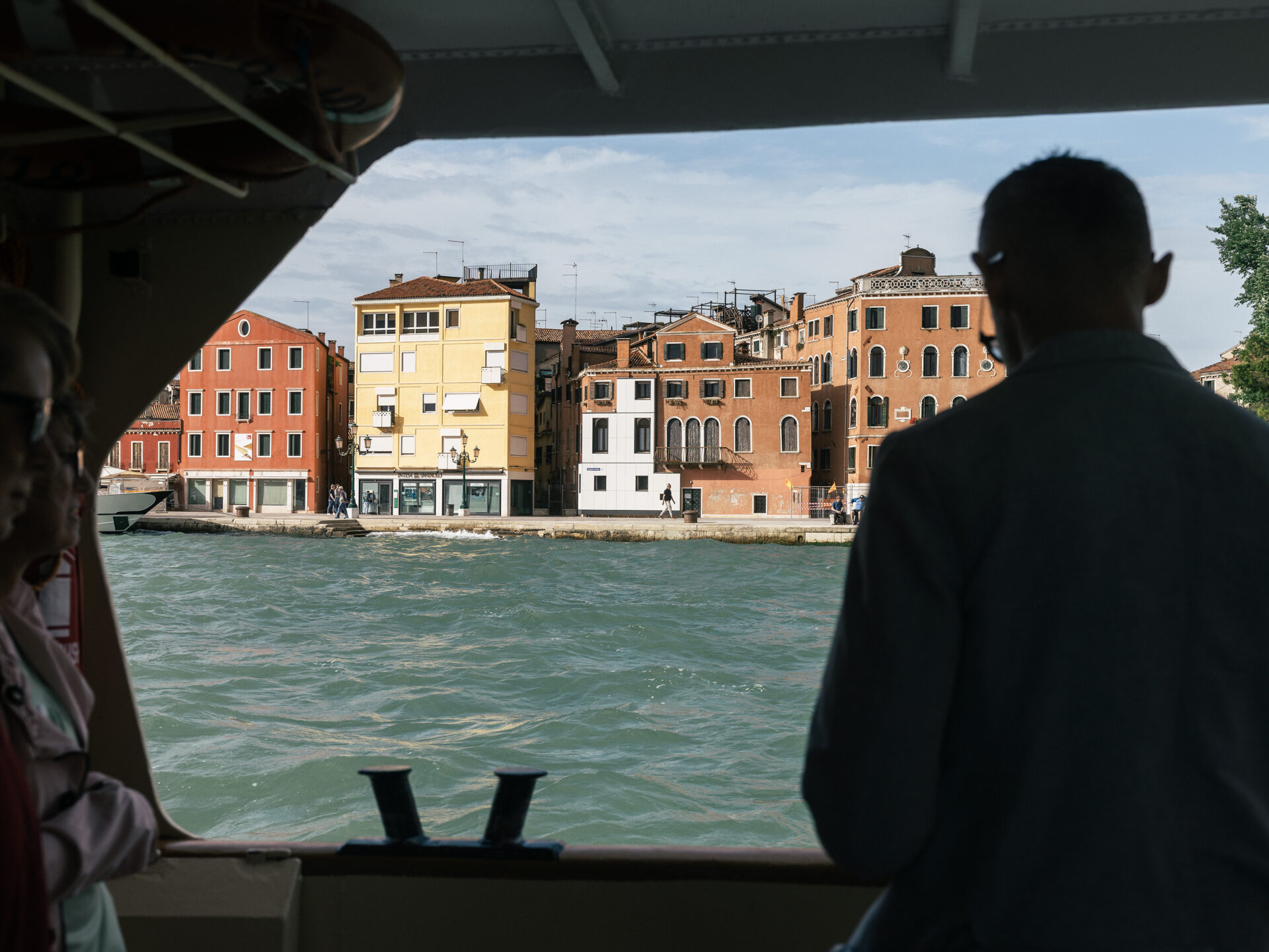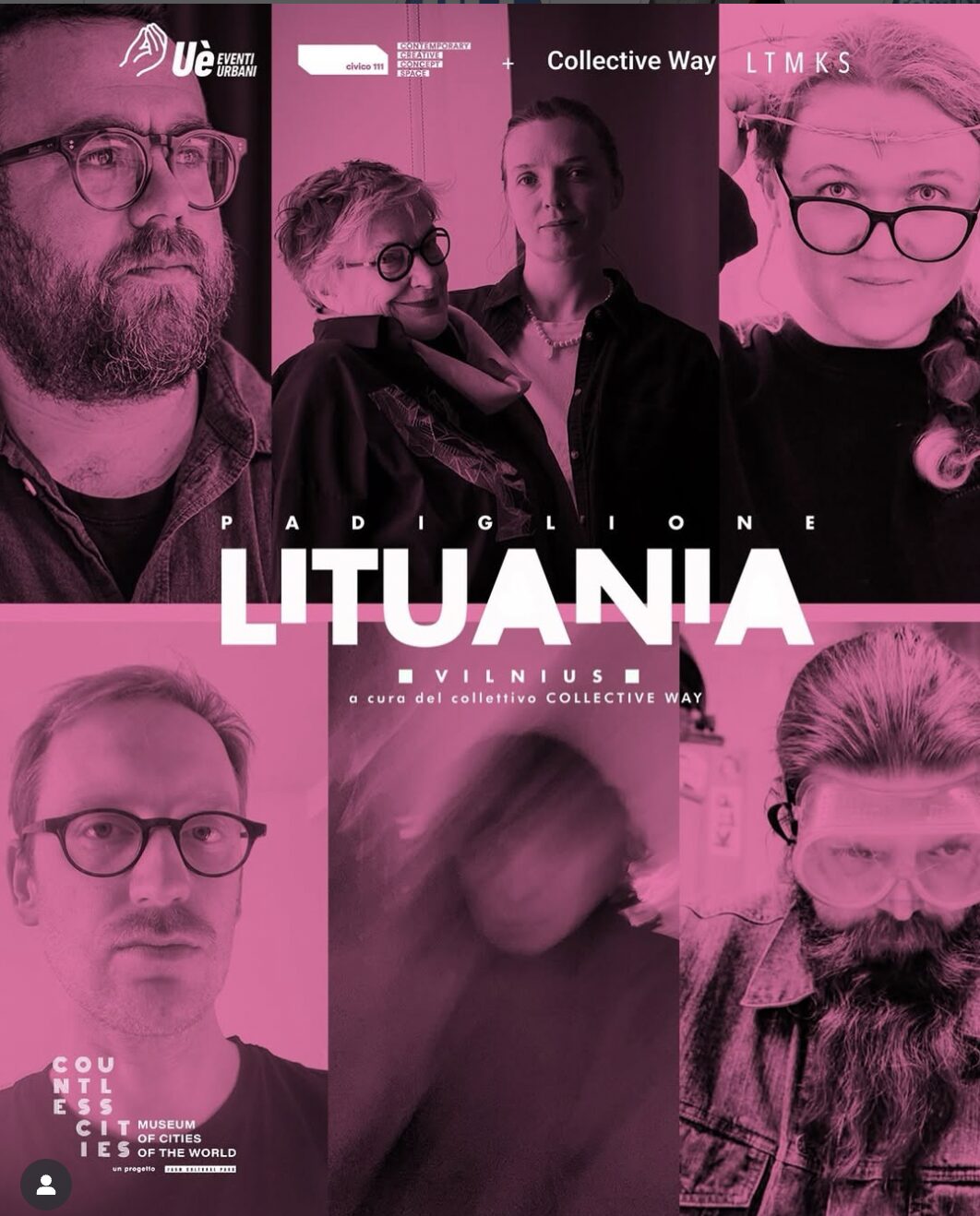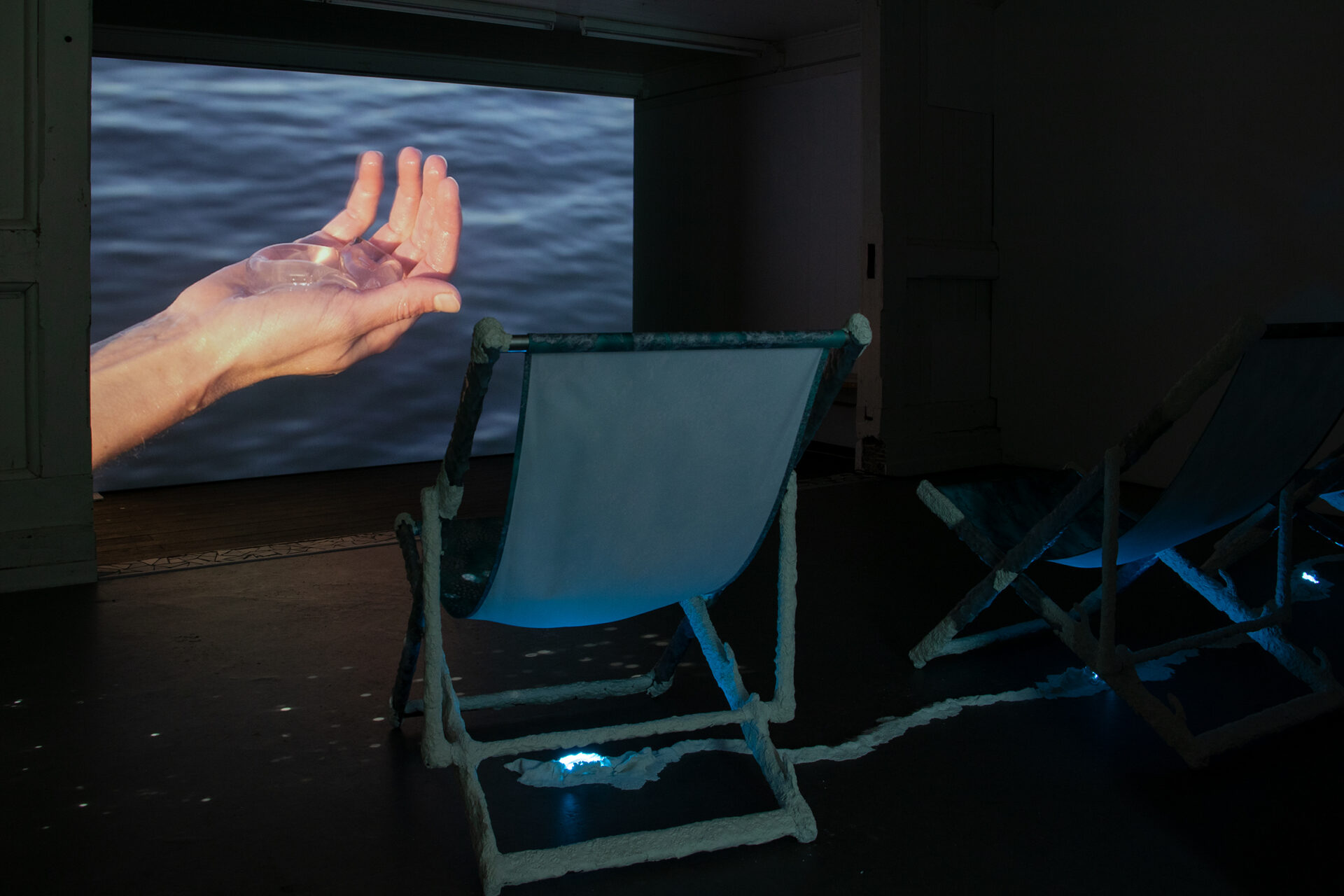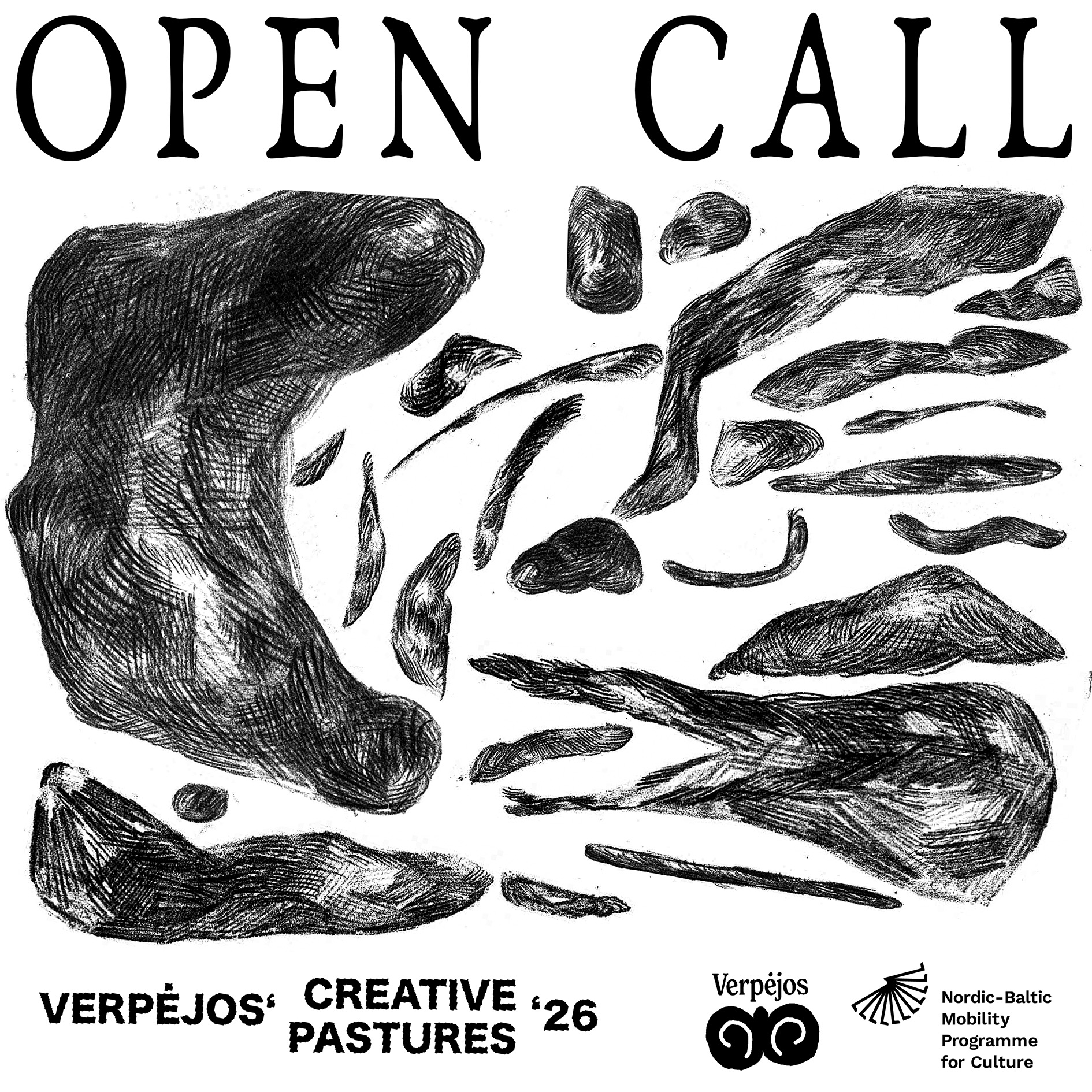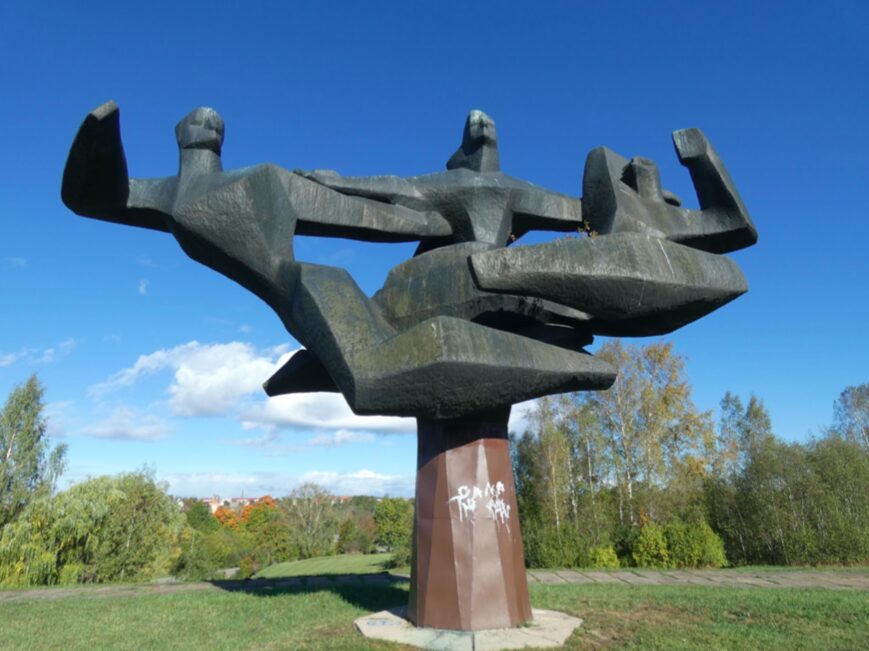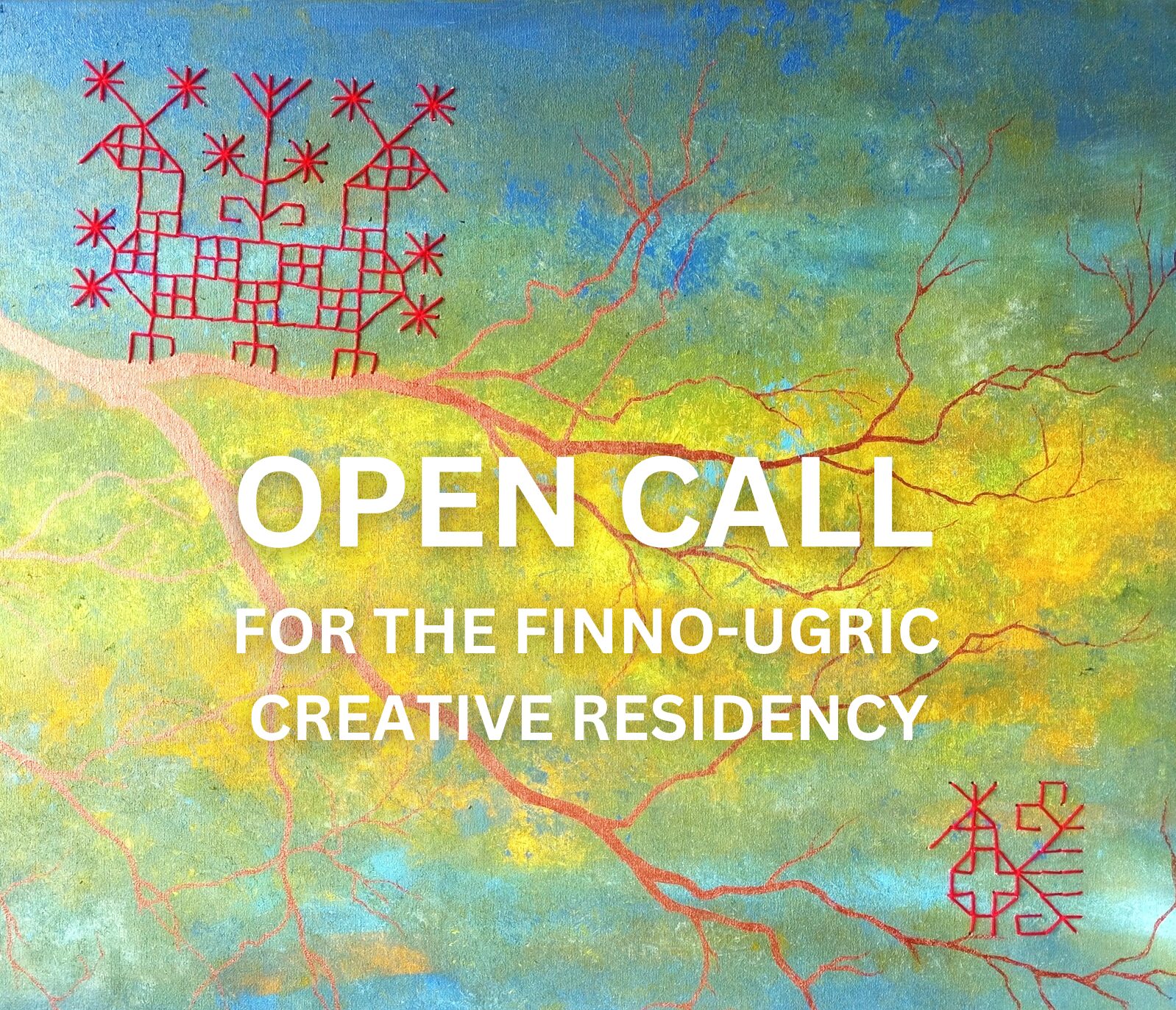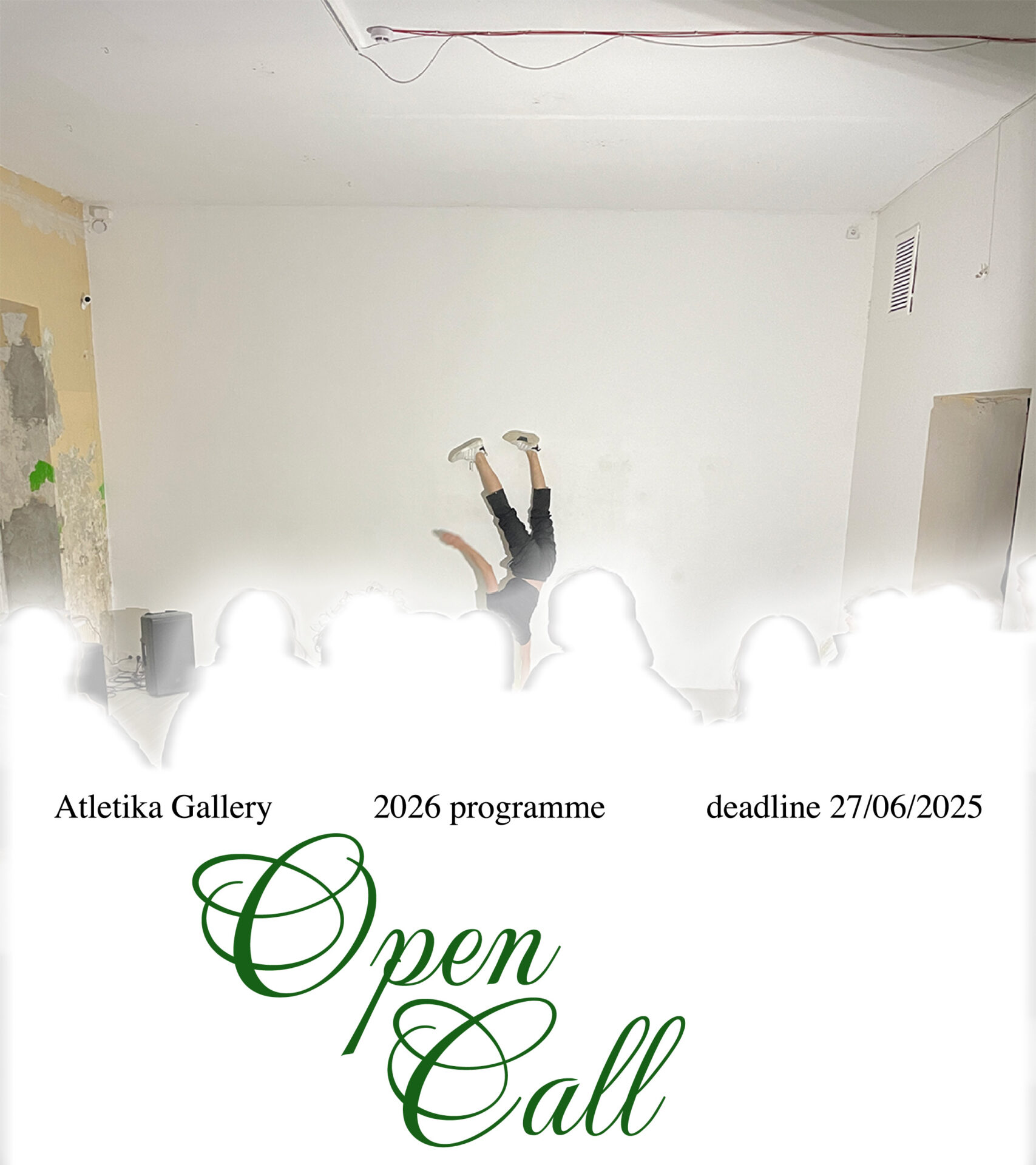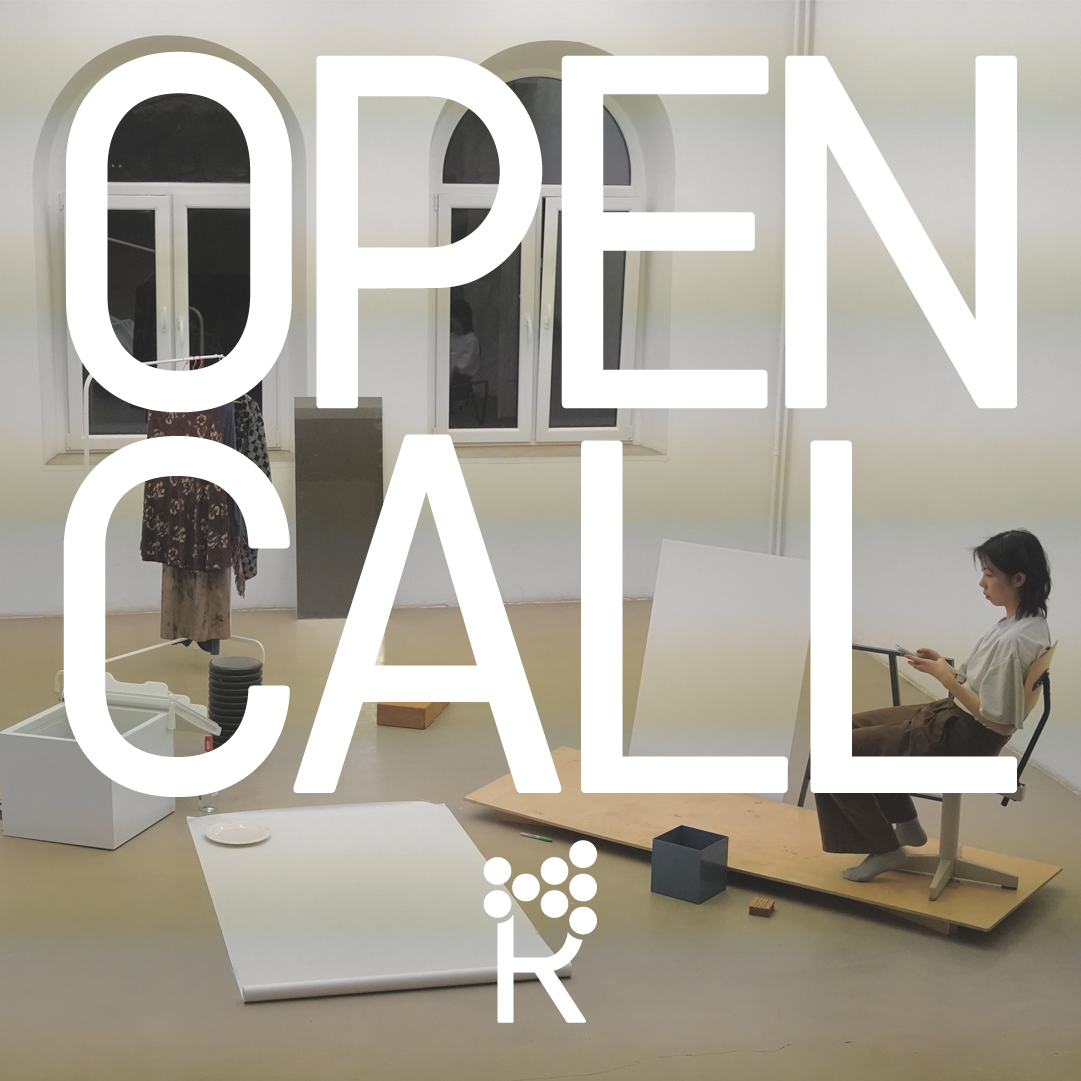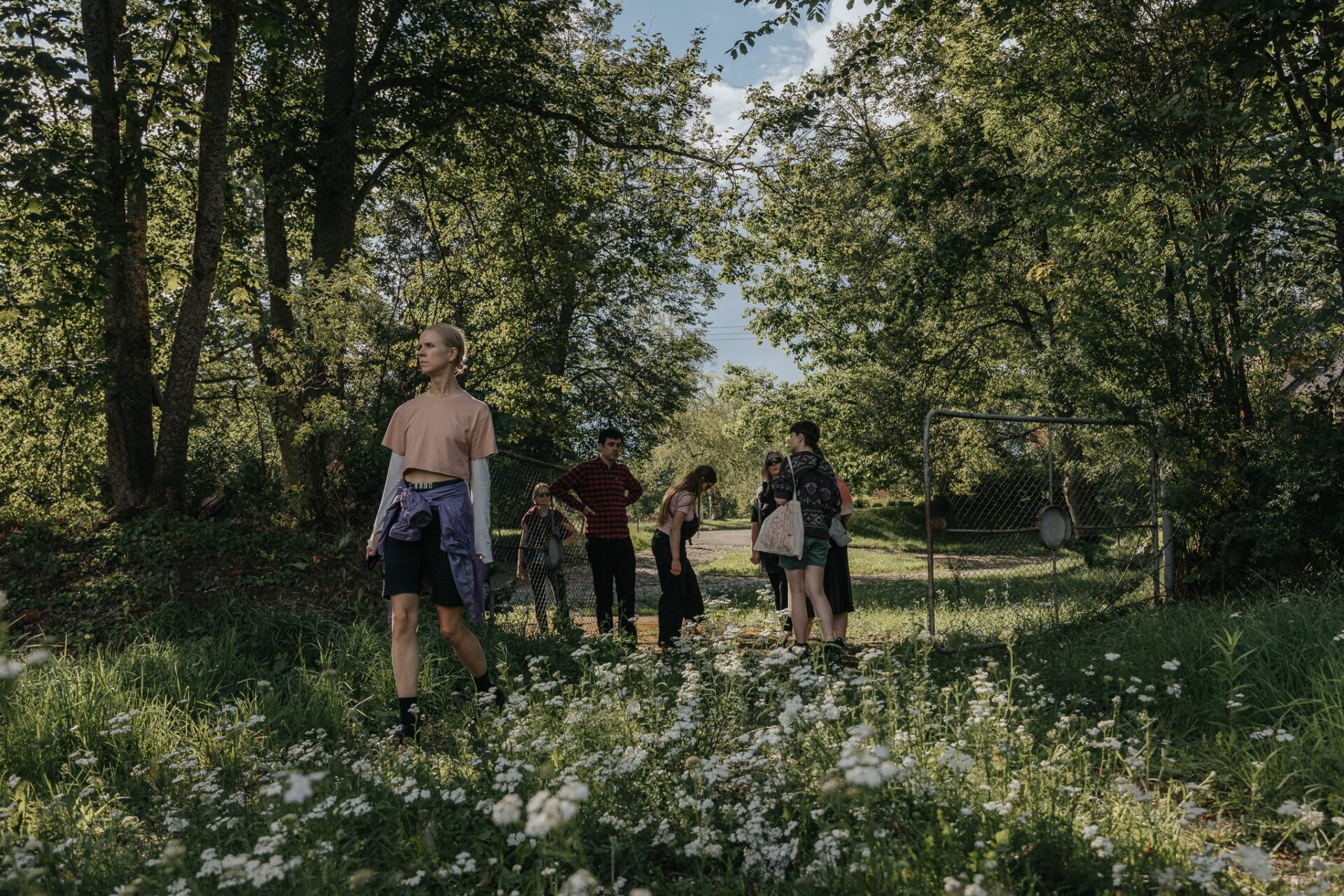On care
The creative process of Augustas Serapinas is deeply rooted in care. Each project begins with conversations with neighbours or the staff of the gallery. These encounters enrich his installations and help him in his attempts to pierce the bubble that the art world can be. Such as, when, at the main exhibition of the Venice Biennale, the artist presented high seats designed for those guarding the exhibition, modelled after lifeguard towers set up on beaches. For it turned out that at the most prestigious event in the art world no infrastructure was provided to enable those looking after the exhibitions to sit down. The artist is genuinely curious about people and their stories enclosed in material objects. Human relationships are not so much a theme as a method of working: they guide the improvisation-based process of making art. As the artist says, though, there is no deep sociological research. ‘I arrive somewhere, and things start to happen. I just see where it will lead.’
Things indeed began to happen after Augustas Serapinas arrived in Bialystok in February last year, although we already knew that the starting point of the exhibition would be wooden vernacular architecture in Lithuania and Podlasie. For years, Serapinas has observed the gradual disappearance of this aspect of the local heritage, which in Lithuania is preserved primarily in the centres of large cities. In rural areas, however, old wooden houses are often sold as firewood or left to decay. One of Serapinas’ earliest works drawing from folk architecture used materials salvaged from a house near the Lithuanian town of Prienai. The owner had planned to demolish the roofless, rotting building, but instead gave it to the artist. Serapinas carefully dismantled the house, treated the materials for insects and mould, and presented them as part of an exhibition. Since then, he has been ‘rescuing’ houses he knows are destined to vanish. The structure featured at the heart of the main installation in the Arsenal Gallery power station has a similar story. In Serapinas’ words, ‘A house transforms into a sculpture, and each sculpture becomes an ambassador for regional wooden architecture.’
The most important process in Serapinas’ artistic practice, as he sees it, is socialising through art. Following this logic, the creation of the ‘Pine, Spruce and Aspen’ exhibition can be described by redirecting attention to people who are important to this process and the fate of wooden architecture in the region. Among them is Jerzy Misiejuk of the Society of Friends of the Open-Air Museum in Koźliki, which loaned the former smithy building that is part of the main installation. Misiejuk recalls the museum’s informal beginnings: in 1987, at the age of just 19, he and a group of friends from the area purchased, transported and rebuilt a wooden windmill on fields near Stupniki, where they used it as a summer retreat. It was not until a decade later that the association was formally registered. Over the years, this group of friends planted trees and acquired and brought cottages, barns and granaries to the museum. Just like Serapinas, they were driven by a deep concern for preserving the architectural heritage of their community, and by the practice of dismantling, relocating and reconstructing wooden structures. Over time, these preservation projects became interwoven with their personal lives. Grassroots open-air museums operate under a different ethos to state-run institutions. The buildings in these museums serve the local community as needed, functioning as living ‘monuments’ whose essence is revealed through their use. The final element in Serapinas’ monumental installation, a small granary, was borrowed from the Open-Air Museum in Białowieża, where it is cared for by Jerzy Monachowicz, among others. Monachowicz shares the story of the granary, which was built by Joachim Wołosowicz (b. 1905) in the village of Koszele. The exact date of its construction is unknown, for those who might have remembered it are no longer alive. The documentation of vernacular architecture rarely provides the level of detail available for state-sponsored projects, or those created for the upper classes, where both the dates and the names of architects and patrons are often meticulously recorded. This lack of documentation highlights the challenges faced by scholars of folk history. In the early stages of the current ‘folk turn’ in historiography, researchers sought to create a ‘folk history of Poland’, conceived as a general social history of the nation. Only recently have narratives emerged that include the micro-histories of specific individuals. In the earlier historiographical model, the granary from Koszele would have been classed as one of many typical ethnographic objects built before the Second World War. However, with the help of friends, Monachowicz uncovered some personal details: the years of the birth of Wołosowicz’s wife (1915) and his oldest daughter (1943), the family’s story of exile from the Western Krai to Russia, Joachim’s untimely death, and the hardships of war. Thanks to the work of local activists, focused not only on generalised folk history but also on individual stories, these private histories now resonate through the materials that form Serapinas’ installation.
However, the artist is primarily interested in the practical aspects of vernacular architecture: the mobility and functionality of modular construction systems. These buildings are crafted from locally sourced materials, typically pine, spruce or aspen, in the case of wooden houses in Lithuania and Podlasie. Their design allows them to be easily dismantled into individual components and transported by just two people. The timber construction enables the structures to be reassembled with minimal effort in a new location, whether a settlement, open-air museum, or art gallery. This process forms the conceptual foundation of ‘Pine, Spruce, and Aspen’. It was made possible by the collaboration of Podlasie carpenters, part of the Białystok branch of the Polish Roofers Association, who preserve, practise and pass on traditional building techniques. Serapinas views mobility and modularity as intrinsic to the DNA of these structures, basing his installation on the logic of local architecture. He uses the ‘rules of the art world’ to once again set these buildings in motion. Perhaps the true essence of the artistic process lies in the efforts of the carpenters over several days, who assembled the various elements into their final form. What visitors see is the result of this performance: a long corridor constructed from the alternating walls of the Koszele granary, a Lithuanian house, and the Podlasie smithy. This mode of presentation emphasises the architectural logic of the structures, revealing their adjoining, numbered parts and interlocking joints. It also highlights the similarities and differences in their construction and the condition of the wood. The state of preservation illustrates vividly which objects have been kept in local open-air museums, and which were ‘rescued’ by the artist from the brink of decay.
On destruction
With the four works that open the exhibition, collectively entitled Roof from Meškauščizna, the artist shifts the narrative from care to destruction. These square pieces, carefully cut from a traditional wooden shingle roof, are blackened by fire. Their charred surfaces evoke distant echoes of the work of Frank Stella, one of the most influential American artists of the 20th century. While the black colour and geometric arrangement might initially call to mind Stella’s renowned Black Paintings, Serapinas’ approach aligns more closely with Stella’s ‘Polish Village’ series. This series of paintings, drawings and models (exhibited at the Polin Museum of the History of Polish Jews in 2016) paid homage to Poland’s pre-Second World War wooden synagogues, destroyed during the Holocaust. Inspired by the research by Maria and Kazimierz Piechotka, Polish architects who documented these sacred Jewish structures in a landmark 1959 publication, Stella created abstract interpretations of these synagogues in the 1970s. Like Serapinas, he named his works after the towns and villages where the buildings once stood. Stella described his ‘Polish paintings’ as a form of construction, reflecting his desire to recreate cultural memory through art. This need to build, both as an act of preservation and artistic reinterpretation, connects Stella and Serapinas, who share a deep engagement with traditional craftsmanship and the architectural heritage.
While Serapinas’ practice often centres on preserving vernacular architecture, he is also drawn to its destruction. Fascinated by this inevitable process, he sometimes chooses to destroy certain structures himself. The works on display are fragments of a roof he intentionally burned. Serapinas argues that when the demise of a building is certain, a dramatic end in flames can serve as its most striking farewell. The burned roofs from Meškauščizna, exhibited in Białystok, resonate with a highly specific local context: the deliberate destruction of the city’s wooden architectural heritage.
In 2019, Andrzej Kłopotowski, writing for the local edition of Gazeta Wyborcza about a fire on Angielska Street, remarked that it did not surprise him. The Białystok journalist had already reported on numerous fires in areas like Angielska and other neighbourhoods where old wooden houses still stood. He frequently criticised the systematic clearance of these structures by developers in districts such as Młynowa, Piasta, Słonimska and Angielska streets, as well as other parts of the city. A retrospective look at Kłopotowski’s articles reveals the evolution in his attitude, shaped by a growing sense of powerlessness. Initially, he described filing reports with the prosecutor’s office regarding the destruction of historic buildings. Over time, his tone shifted to anger and frustration, as he called out developers, urban planners, city council members, mayors, and indifferent residents. Eventually, he resigned himself to the situation, writing in later articles: ‘If there’s to be a block of flats, then there will be a block of flats,’ and, ‘To be honest, I’m tired of “typing away” about yet another fire next to a historic site. I’m tired of writing about a burnt house in a spot where a block of flats is destined to rise.’ As with so many other values, vernacular architecture often finds itself defeated in the face of unchecked capitalism.
On transience
The disappearance of wooden architecture in the region is not only the result of deliberate, profit-driven actions by developers. Old houses fall into disrepair when they are abandoned, dismantled, rebuilt, or extensively modernised, because they no longer meet the needs of contemporary owners and users. These structures were never intended to last for centuries. The advanced decay of wooden shingle-covered roofs, displayed vertically as part of a monumental installation in the exhibition, marks the final stage in their natural life cycle. The processes of transience observed here, much like vernacular architecture itself, are easy to romanticise. However, for the people who live in these buildings, the concerns are primarily practical. Residents of Podlasie grapple with the question of how to honour their folk heritage without reducing it to a tourist brand or a sentimental myth. This exhibition shifts attention to the complex and varied contemporary fates of vernacular architecture and its historical functionality, rather than its romanticised, picturesque qualities. Serapinas, who is interested in function expressed through minimalist forms, does not draw on the rich decoration of wooden architecture that is often celebrated in traditional aesthetic canons of folk art.
As Ewa Klekot has argued, these aesthetic frameworks were often shaped in urban contexts. ‘A piece of folk art always had two creators: the person who made it in the countryside and the one who selected it as “folk” and transformed it into art.’ The popular turn towards folk themes in visual art raises important questions about how to ethically engage with this heritage. It involves listening to the voices of individuals from working-class backgrounds who, through social mobility, have entered the art world. Serapinas himself, the son of an Orthodox priest raised in extremely modest circumstances, embodies this dynamic. While he does not view his upbringing as harsh or inferior, his life has diverged significantly from it. Nevertheless, he has successfully presented works in the art world that draw directly from the crafts and practices of his home region. This approach, however, carries the risk of reproducing the problematic historical role of folk art, which often served as an exported representation of Lithuanian (or Polish) art as a whole.
One possible ethical strategy for engaging with this heritage is to present artistically reimagined elements of vernacular architecture in their place of origin, creating spaces for a dialogue with the communities to whom they belong. This dialogue can explore the contemporary relevance and significance of these traditions. The development of ‘Pine, Spruce and Aspen’ fostered a range of new relationships in the region, emerging from the processes that Serapinas initiated. As part of the exhibition, the team conducted local research, met with residents, and connected local stories and figures with contemporary artistic and curatorial strategies. For Serapinas, the reactions of people living near his projects are particularly significant. Klekot suggests the concept of ‘appropriation’ as a means of fostering dialogue with folkloric representations and their perceptions, by creating conditions for their reinterpretation. Both the exhibition and its accompanying public programme attempt to realise this vision.
Translated from Polish by Anna Bergiel
Augustas Serapinas
Pine, Spruce and Aspen
Arsenal Gallery in Bialystok
15.11.2024 – 2.03.2025
Curators: Post Brothers & Katarzyna Różniak-Szabelska

Augustas Serapinas, Pine, Spruce and Aspen, 2024, Arsenal Gallery in Bialystok, exhibition view. Photo: Tytus Szabelski-Różniak

Augustas Serapinas, Pine, Spruce and Aspen, 2024, Arsenal Gallery in Bialystok, exhibition view. Photo: Tytus Szabelski-Różniak

Augustas Serapinas, Pine, Spruce and Aspen, 2024, Arsenal Gallery in Bialystok, exhibition view. Photo: Tytus Szabelski-Różniak

Augustas Serapinas, Pine, Spruce and Aspen, 2024, Arsenal Gallery in Bialystok, exhibition view. Photo: Tytus Szabelski-Różniak

Augustas Serapinas, Roof from Meškauščizna, 2024; wood, 140 x 150 cm. Photo: Tytus Szabelski-Różniak

Augustas Serapinas, Roof from Meškauščizna, 2024; wood, 140 x 150 cm. Photo: Tytus Szabelski-Różniak

Augustas Serapinas, Roof from Meškauščizna, 2024; wood, 140 x 150 cm, detail. Photo: Tytus Szabelski-Różniak

Augustas Serapinas, Pine, Spruce and Aspen, 2024, Arsenal Gallery in Bialystok, exhibition view. Photo: Tytus Szabelski-Różniak

Augustas Serapinas, Pine, Spruce and Aspen, 2024, Arsenal Gallery in Bialystok, exhibition view. Photo: Tytus Szabelski-Różniak

Augustas Serapinas, Pine, Spruce and Aspen, 2024, Arsenal Gallery in Bialystok, exhibition view. Photo: Tytus Szabelski-Różniak

Augustas Serapinas, Pine, Spruce and Aspen, 2024, Arsenal Gallery in Bialystok, exhibition view. Photo: Tytus Szabelski-Różniak

Augustas Serapinas, Pine, Spruce and Aspen, 2024, Arsenal Gallery in Bialystok, exhibition view. Photo: Tytus Szabelski-Różniak

Augustas Serapinas, Pine, Spruce and Aspen, 2024, Arsenal Gallery in Bialystok, exhibition view. Photo: Tytus Szabelski-Różniak

Augustas Serapinas, Pine, Spruce and Aspen, 2024, Arsenal Gallery in Bialystok, exhibition view. Photo: Tytus Szabelski-Różniak

